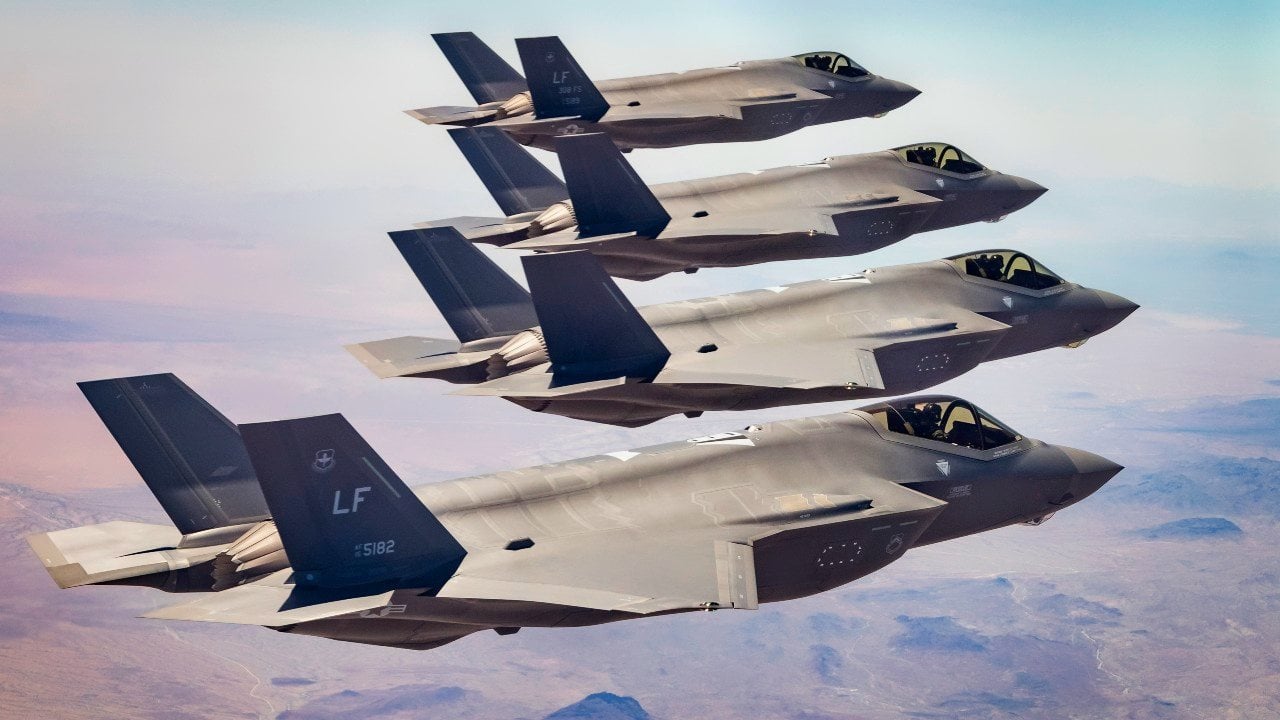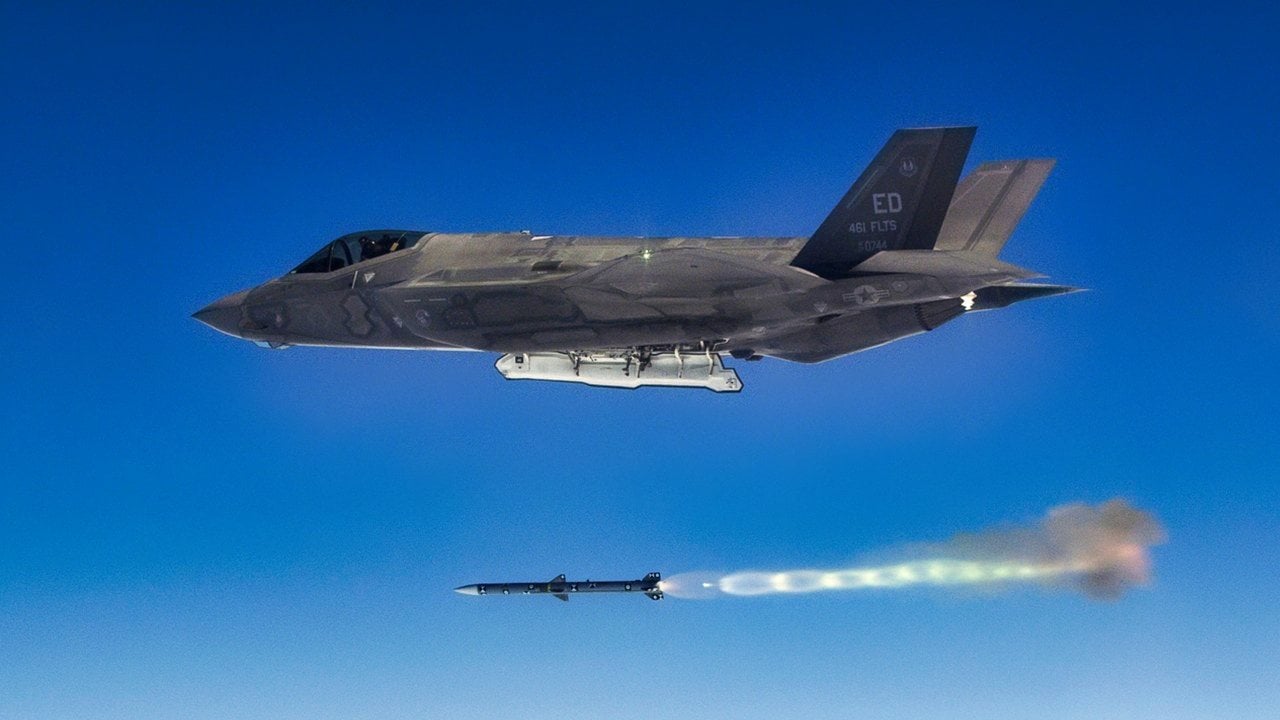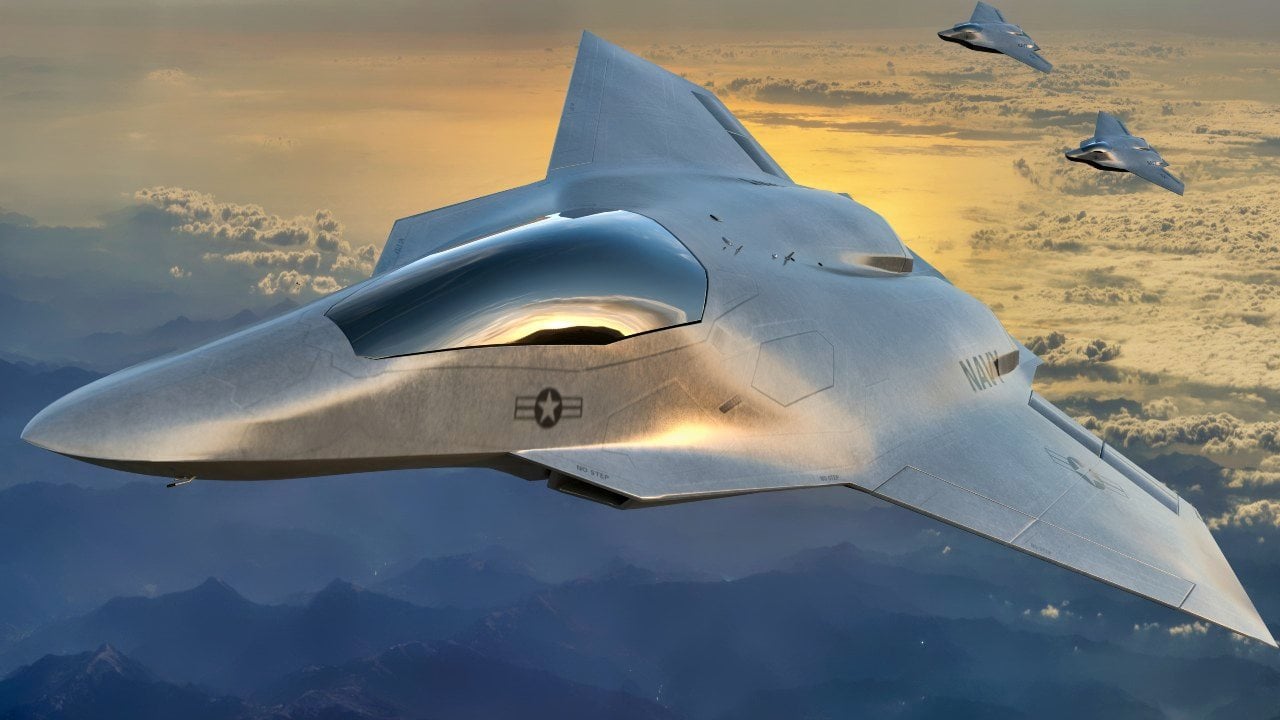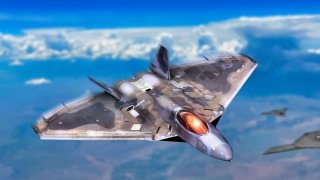NGAD vs. F-35 Fighter: What's the Difference?
The NGAD fighter could very well become the most advanced and best-built fighter jet the U.S. Air Force has ever had. But the F-35's unique capabilities are hard to ignore.
Summary: As tensions escalate between Beijing and Washington over the South China Sea and Taiwan, the battle for air superiority intensifies. The U.S., long a leader in aerial combat with the introduction of the F-22 Raptor, now faces competition from China's Chengdu J-20 and Russia's Sukhoi Su-57. The U.S.'s F-35 Lightning II is widely regarded as the most advanced fifth-generation fighter, combining stealth, speed, and advanced avionics.

-However, the U.S. Air Force is already looking ahead with its Next Generation Air Dominance (NGAD) program, which aims to develop a sixth-generation fighter incorporating advanced weapons, AI technology, and unmanned aerial vehicles.
-Demonstrator NGAD aircraft are already airborne, with a contract expected in 2024, underscoring the need for cutting-edge air superiority in the current global threat climate.
NGAD vs. F-35: A Showdown Comparision
Now that tensions between Beijing and Washington are ramping up over the South China Sea and Taiwan, the fight for air superiority between the two nations is at an all-time high.
For many years, the U.S. retained aerial might over its adversaries. When the F-22 Raptor was first introduced to the service, it became the world’s first-ever fifth-generation fighter platform. However, Moscow and Beijing pushed to modernize their respective aircraft capabilities around this time and ultimately developed their fifth-generation counterparts - the Chengdu J-20 and the Sukhoi Su-57. While America’s latest F-35 Lightening II fighter platform is widely considered to be the most formidable of its kind to take to the skies, the U.S. Air Force is already looking towards the future with its Next Generation Air Dominance program (NGAD).
Although no explicit definition can be applied to fifth-generation airframes, experts and military experts alike generally agree that stealth characteristics are the foundation.
The leading fifth-generation airframes today combine precision attack capabilities, agility, speed and situational awareness with stealth.
The Lockheed Martin F-22 and F-35 Lightening II, in addition to China’s Chengdu J-20 and Russia’s Sukhoi Su-57, fall into this category.

Each of these fighters is considered lightyears ahead of preceding platforms, yet the F-35 stands out for its particular cutting-edge features.
This article takes a look at what will separate the F-35 and NGAD, as many experts are now questioning if the U.S. Air Force needs a 6th generation fighter like NGAD.
Introducing the F-35
When the F-35 was well within its development phases in the late 1990s and early 2000s, the fighter incorporated new systems that were truly at the bleeding edge of combat aircraft design.
As the product of the Joint Strike Fighter program, the F-35 was developed to fulfill the specific needs of both the Navy and Air Force.
International partners notably participated in the JSF program, including the U.D., Italy, Denmark, Norway and the Netherlands.
By the late 1990s, both Lockheed Martin and manufacturing competitor Boeing were selected based on their concept demonstrator aircraft. Ultimately, Lockheed was selected as the winner, and the F-35 entered its development phase.
F-35: Key Details
The F-35 was designed to fly at speeds reaching Mach-1.6 (times the speed of sound), which is attainable with a full internal payload. With nearly double the internal fuel of its predecessor the F-16 Fighting Falcon, the Lightening II has a greater combat radius. Since the F-35 is highly armed, it is considerably heavier than the lightweight fighters that came before it. The lightest of the F-35 variants has an empty weight of just over 29,000 pounds.

Three main F-35 variants exist: the conventional takeoff and landing F-35A, the short take-off and vertical-landing F-35B and the carrier-based F-35C.
One of the most pivotal upgrades incorporated in the F-35 is advanced technology. Built on lessons learned from designing the Raptor program, the F-35 is equipped with sophisticated sensors and avionics components. The open architecture code installed in this platform enables continuous updates and improvements over time.
In addition to this top-notch avionics suite, the F-35 has an extremely low radar cross-section.
What Makes NGAD Special
While the F-35 will likely be dominating the skies for years to come, the Air Force is already working towards its next-generation strategy. First conceptualized back in 2014, the NGAD program is designed to achieve air superiority.
Five different technologies that will be prioritized in the fighter’s design are advanced weapons, stealth, digital design, propulsion and thermal management.
While sixth-generation technology has not been precisely defined, the features in the NGAD program are expected to exceed the capabilities of fifth-generation counterparts.
Significantly, AI technology and unmanned aerial vehicles (UAVs) will be incorporated into the NGAD. These collective combat aircraft are expected to fly alongside a sixth-generation fighter jet. The concept of moving away from the idea that fighters have to be a single, crewed aircraft is also being toyed with in Beijing. While the U.S. became the first country to introduce a fifth-generation airframe to the playing field, it won’t necessarily be the first to get a sixth-generation successor out front first.
NGAD Is Coming Soon
The Air Force has indicated that demonstrator NGAD aircraft are already airborne and that within a year a contract could be awarded to start its official development.
As posted in Breaking Defense: “The Department of the Air Force released a classified solicitation to industry for an Engineering and Manufacturing Development contract for the Next Generation Air Dominance Platform with the intent to award a contract in 2024,” adding that “This solicitation release formally begins the source selection process providing industry with the requirements the DAF expects for NGAD, as the future replacement of the F-22.”

Considering the current threat climate, the introduction of the military’s new-generation fighter program is essential to preserving America’s dominant aerial capabilities.
About the Author: Maya Carlin
Maya Carlin is an analyst with the Center for Security Policy and a former Anna Sobol Levy Fellow at IDC Herzliya in Israel. She has by-lines in many publications, including The National Interest, Jerusalem Post, and Times of Israel. You can follow her on Twitter: @MayaCarlin.
All images are Creative Commons.


